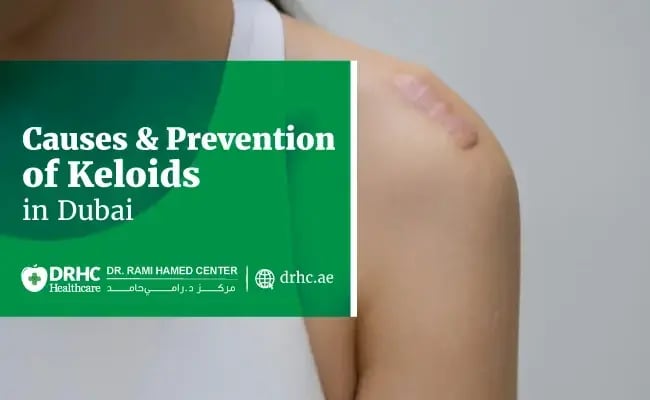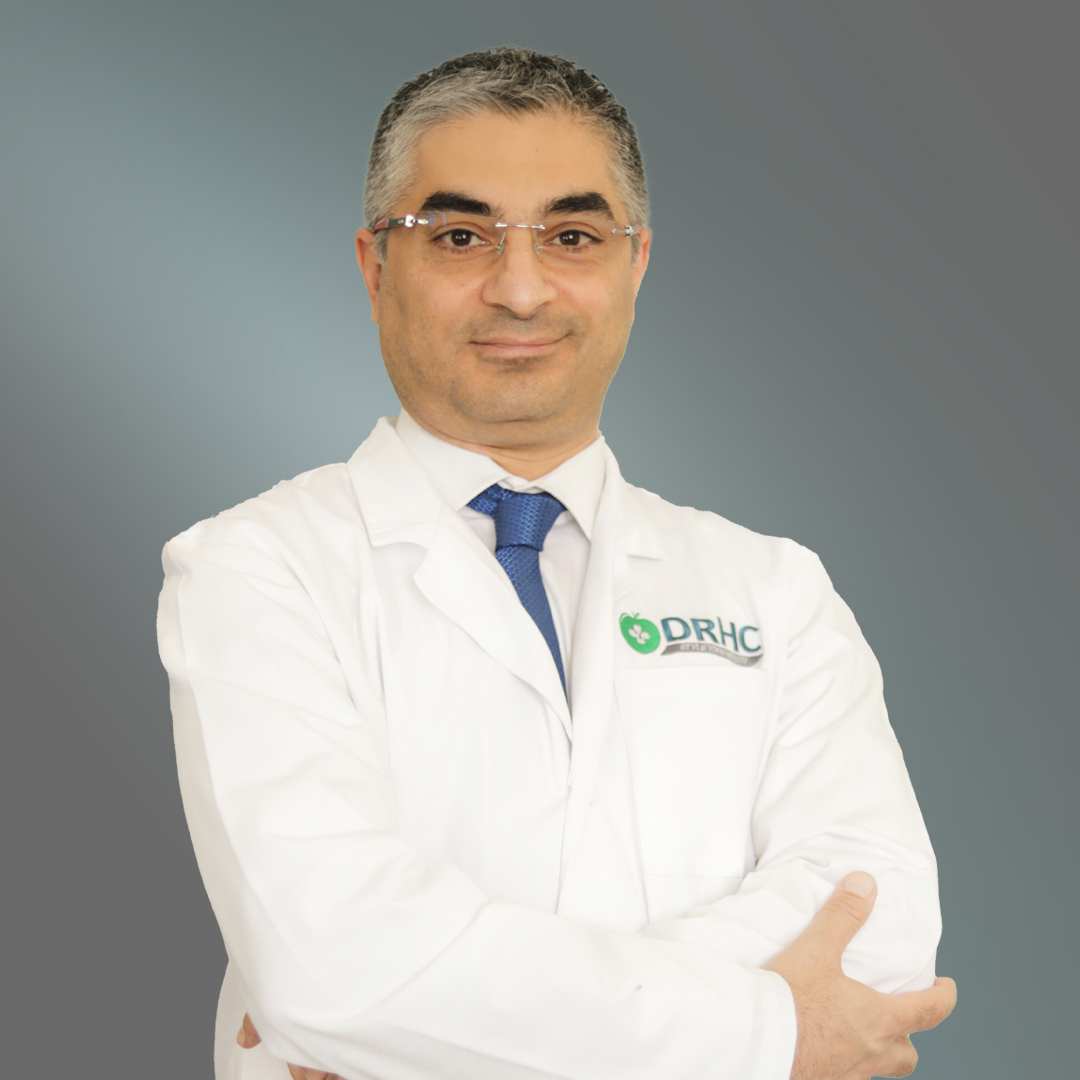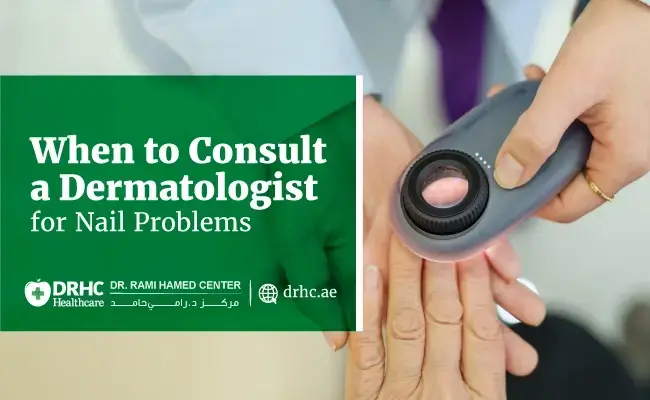
Many people notice that after a cut, burn, or even a piercing heals, the skin forms a small scar. But for some, that scar continues to grow, becoming thick, raised, and sometimes itchy or uncomfortable. These are called keloids—a common skin concern, especially in warm climates like Dubai’s, where skin healing can be affected by humidity, friction, and sun exposure.
At Dr. Rami Hamed Center (DRHC) in Dubai, our dermatology specialists understand how distressing keloids can be, particularly when they affect visible areas like the face, ears, or shoulders. The good news is that with the right care and preventive steps, keloids can often be minimized or managed effectively.
What Are Keloids?
A keloid is an overgrowth of scar tissue that develops when the body’s natural healing process becomes overactive. Instead of stopping once the wound is closed, the skin continues to produce collagen, resulting in a raised, firm, and sometimes shiny scar that extends beyond the original wound area.
Keloids are non-cancerous, but they can cause discomfort, itching, or tightness, and for many patients, emotional distress due to their appearance.
Common Causes of Keloids
Keloids can develop after any skin injury, but certain factors make them more likely:
1. Skin Injuries and Procedures
Even minor skin damage—such as cuts, acne scars, insect bites, burns, ear piercings, tattoos, or surgical incisions—can trigger keloid formation in people who are prone to them.
2. Genetic Factors
Keloids often run in families. People with a family history of keloid formation are more likely to develop them.
3. Skin Type and Tone
Keloids are more common in individuals with darker skin tones, which includes many people of Middle Eastern, African, and Asian descent—making them more frequent in diverse regions like Dubai.
4. Age and Hormones
They often occur between the ages of 10 and 30, when collagen production is at its peak. Hormonal changes during adolescence or pregnancy may also influence their development.
Can Keloids Be Prevented?
While not all keloids can be completely avoided, there are several steps to reduce the risk of developing them—especially for individuals with a known tendency.
1. Avoid Unnecessary Skin Trauma
If you’re prone to keloids, try to avoid elective procedures like piercings or tattoos. Even minor injuries can result in raised scars.
2. Protect Healing Wounds
Keep new wounds clean, moisturized, and covered to reduce irritation. Applying silicone gel or pressure dressings—under medical advice—can help minimize excess collagen buildup.
3. Treat Acne Early
In Dubai’s humid climate, acne can flare easily, increasing the risk of keloid scars. Managing breakouts early with professional help reduces the likelihood of permanent scarring.
4. Sun Protection
UV exposure can make scars darker and more visible. Always use sunscreen on healing skin to prevent discoloration and irritation.
5. Follow Post-Surgery Care Instructions
If you’ve undergone surgery at DRHC Dubai or elsewhere, follow your dermatologist’s wound care advice closely. In some cases, preventive treatments like steroid injections or silicone dressings are recommended after sutures are removed.
Treatment Options Available at DRHC Dubai
If you already have a keloid, don’t worry—several safe and effective treatments are available. At DRHC Dubai, our dermatologists assess each case individually to recommend the most suitable approach, which may include:
- Corticosteroid Injections: To reduce inflammation and flatten the keloid.
- Laser Therapy: Helps lighten and smoothen the scar while improving texture.
- Cryotherapy: Freezes small keloids to reduce their size.
- Surgical Removal (with Preventive Care): Carefully performed to minimize recurrence, often followed by post-removal treatments to prevent regrowth.
- Pressure or Silicone Therapy: Used after procedures to keep the skin flat and prevent excessive collagen buildup.
Each treatment plan is personalized to your skin type, scar size, and healing pattern.
Frequently Asked Questions (FAQs)
Are keloids dangerous?
No, keloids are harmless in most cases, but they can cause discomfort, tightness, or self-consciousness due to appearance.
Can keloids come back after removal?
Unfortunately, yes—keloids can recur, especially without proper aftercare. At DRHC Dubai, we combine surgical and non-surgical methods to reduce the risk of regrowth.
Can I treat keloids at home?
While over-the-counter creams may help soften scars, professional evaluation is essential. Improper treatment can worsen the scar or cause skin irritation.
Compassionate Dermatology Care at DRHC Dubai
At Dr. Rami Hamed Center (DRHC), our dermatology team provides compassionate, science-backed care for patients dealing with keloids and other skin concerns. We understand how these scars can affect confidence and comfort, and we’re here to help you achieve smoother, healthier-looking skin through personalized treatment.
If you’re concerned about a new or existing keloid, schedule a consultation at DRHC Dubai to explore safe and effective options for prevention and treatment.
📞 Call / WhatsApp: +97142798200
📍 Visit Us: Dr Rami Hamed Center, Dubai Healthcare City
🌐 Website: www.drhc.ae
Topic: Dermatology









Leave a comment